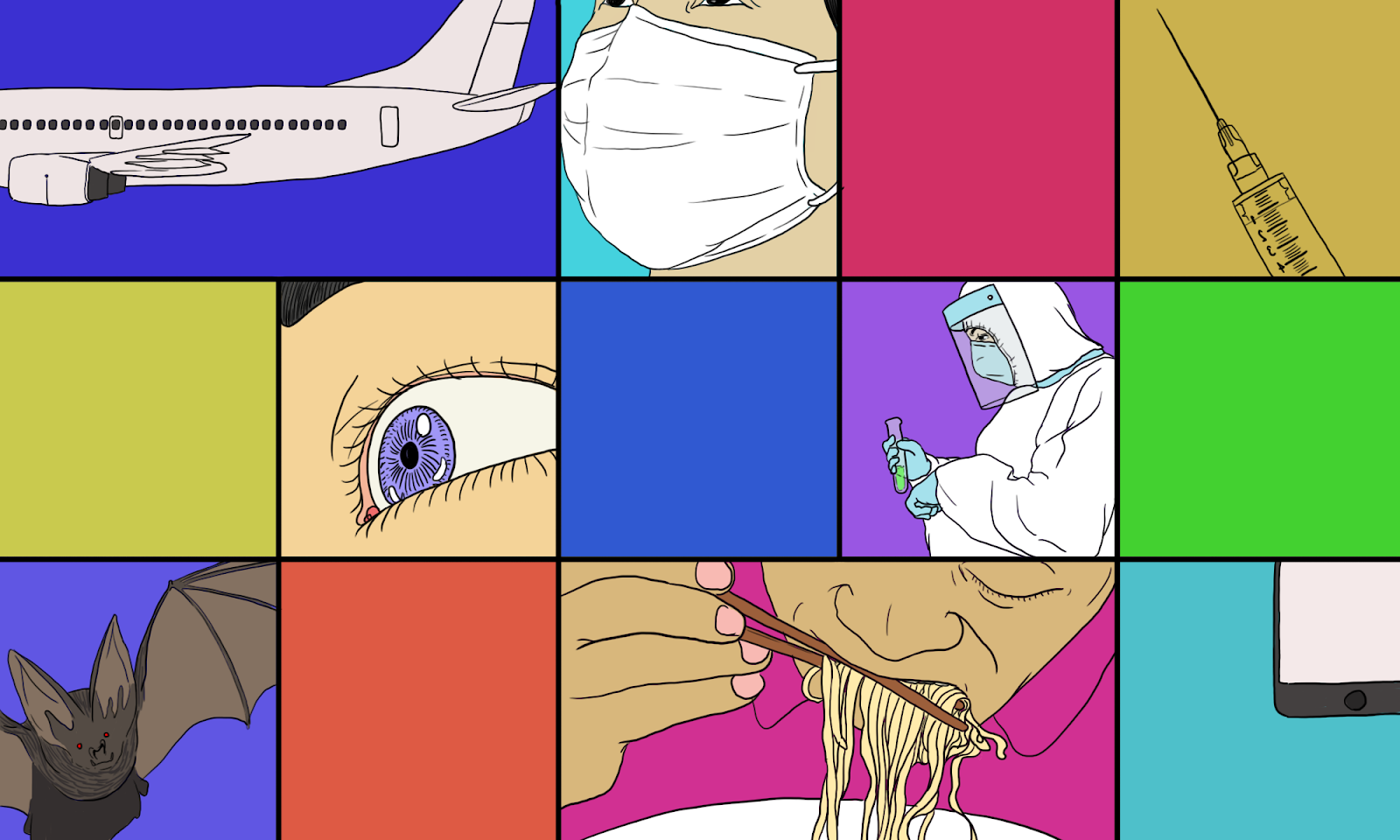The Wuhan coronavirus epidemic will probably get worse, but here’s why you shouldn’t panic


Photo credit: The China Project illustration by Derek Zheng
The Wuhan coronavirus continued to spread over the weekend at an accelerating speed, both in China and around the world. The most up-to-date official count in China is 2,889 infected and 82 dead. Seventy-six of those deaths are in Hubei Province, while Beijing, Shanghai, and Hainan Island have each reported their first death from the virus.
The mayor of Wuhan, Zhōu Xiānwàng 周先旺, apologized over the weekend for not releasing information more quickly over the past month and a half, though he “pointed out the local government was obliged to seek permission [from the central government] before fully disclosing information about the virus,” according to the Guardian. Much of the international and domestic criticism of the government’s handling of the epidemic has centered on the Wuhan government’s muzzling of reports of the earliest infected cases.
Wuhan and many nearby cities are in lockdown, with transport links suspended, roads closed, and public gatherings canceled. All over the country, Lunar New Year events have been scrapped, while many towns and villages are erecting roadblocks manned by locals who chase visitors away.
Reasons not to panic
We asked David Ho, the renowned HIV/AIDS medical researcher who spoke at our NEXT China conference last fall, about his thoughts on the coronavirus. He pointed out that as of late last week, the mortality rate appeared to be around 2.5 percent, which is “about 3-4-fold lower than SARS.” He added:
The deaths are occurring in people who are old or those with prior medical conditions. If we were to put the influenza figures next to this new CoV, the absolute case numbers and mortality rates would be much greater [for the regular flu]. But we are rather complacent with flu even though it is quite deadly to the very young, the elderly, and those with underlying medical problems.
No deaths have been reported outside of China, which would corroborate the relatively low mortality rate from official data in China. The New York Times summarizes the latest international infection situation:
Thailand and Hong Kong have each reported eight cases of infection; the United States, Taiwan, Australia and Macau have five each; Singapore, Japan, South Korea and Malaysia each have reported four; France has three; Canada and Vietnam have two, and Nepal and Cambodia each have one.
Why it will continue to get worse
Ho told The China Project that his “guess is that this would be brought under control within a few months,” though the “travel for the Chinese New Year is the major confounder” in any predictions. Ho added that “it remains possible that the virus could rapidly adapt to more efficient replication in humans and therefore become more virulent and/or more transmissible. But the Chinese health authorities just reported that they have not witnessed changes in the virus over the past few weeks.”
Unofficially, as many as 44,000 could be infected in Wuhan alone, according to research led by Gabriel Leung at Hong Kong University, the SCMP reports. Unlike the official number of diagnosed cases of infection, this total includes an estimate of cases of people who are not yet showing symptoms but whose bodies are incubating the virus. Officials have said previously that the virus appears to be infectious even in the incubation period.
How to take precautions
“Masks are useless when worn outdoors and may not be very helpful even indoors,” says Pulitzer Prize–winning science reporter Laurie Garrett in Foreign Policy. “I rarely wear a face mask in an epidemic, and I have been in more than 30 outbreaks.” Instead, Garrett suggests, wear gloves, and avoid touching one’s own face. The CDC and WHO both give advice for prevention that is similar to what Garrett recommends.
The SCMP has published a list titled Coronavirus contacts for foreign nationals in China, for those seeking information or help.






